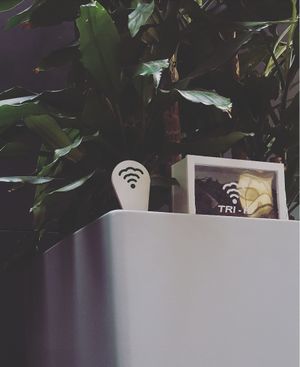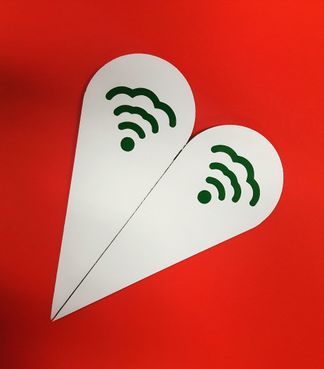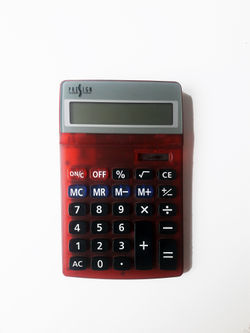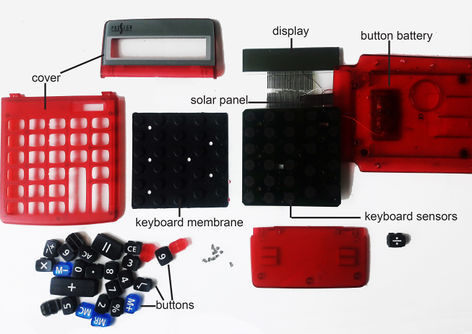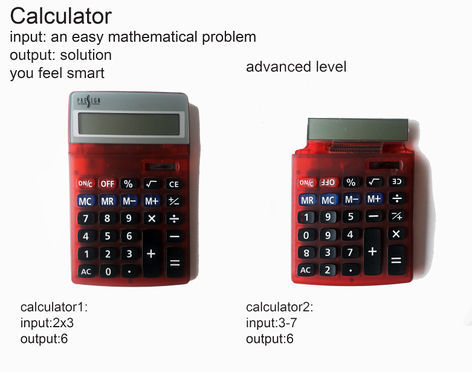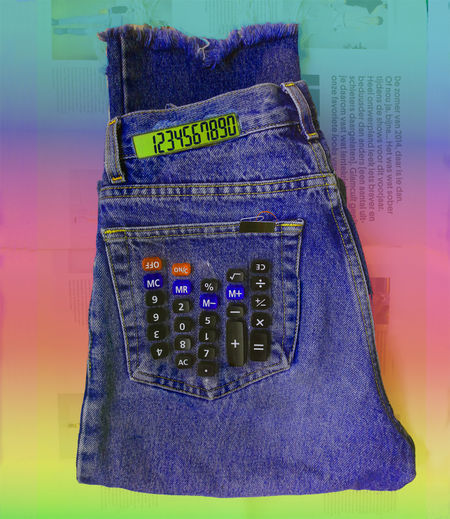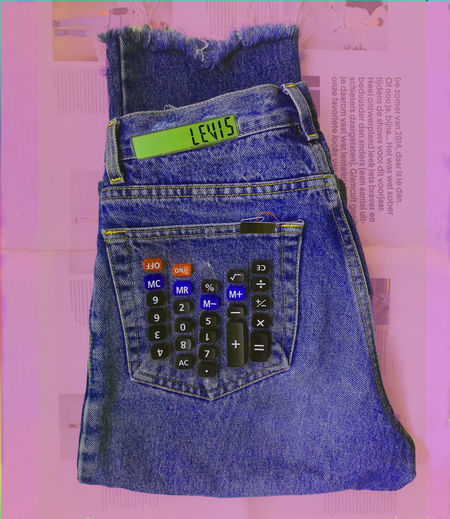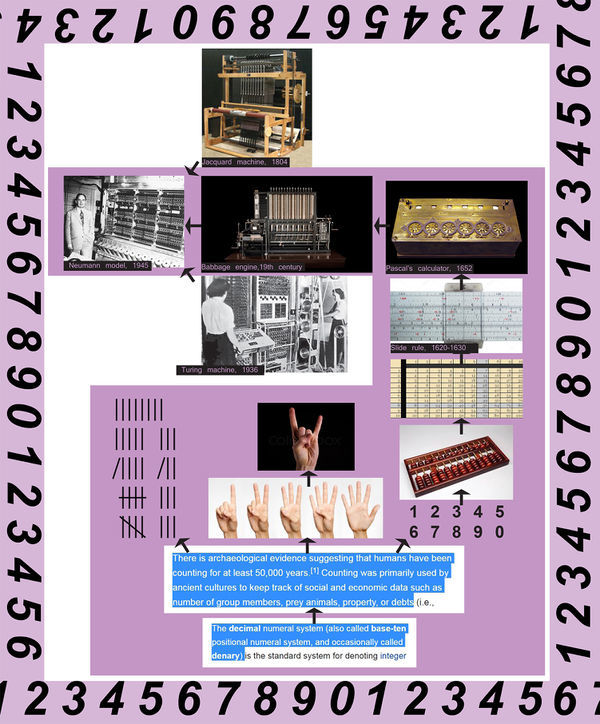Difference between revisions of "User:Rekanna"
| Line 144: | Line 144: | ||
''- Colossus, 1943-1945, Turing<br> | ''- Colossus, 1943-1945, Turing<br> | ||
''- EDVAC Computer, 1944, Neumann<br> | ''- EDVAC Computer, 1944, Neumann<br> | ||
| − | ''- IAS Computer, 1951, Neumann -> computer era | + | ''- IAS Computer, 1951, Neumann -> computer era |
| + | |||
| + | My conclusion is that the development of numbers and counting is directly related to sciences, information technology and technological advancement. It is interesting to see the evolution of these gadgets - which are so ordinary and common-used today! | ||
==Project 5 - Position Paper of my Practice== | ==Project 5 - Position Paper of my Practice== | ||
Revision as of 15:10, 14 November 2018
Contents
Contact
Réka Anna Huszár
0975638
huszar.reka.anna@gmail.com
Fashion Design
Project 1 - Critical Making Excercise
Dating App for Trees
How to build a Dating App for trees?
Nowadays people meet online – it has never been easier to show your interest then swiping right. But how could a tree make decisions? Do trees make decisions? What if trees would talk?
After a short research, we discovered that trees are actually able to talk. They use the networks of fungi that grow in the ground and inside their roots. Through this system, trees can share resources with each other furthermore plants use fungi to send messages to one another!
Inspiration [1] from BBC
If this is true, what happens with the flowers and plants in pots? – asked ourselves. Struggling with total loneliness? As a solution, we decided to create a system that would allow indoor plants to communicate and fulfil their social need. Using the concept of wi-fi – we designed the network called the TRI-FI.
with Martha, Maria, Daan and Balázs
Project 2 - Cybernetic Prosthetics
Project 3 - Black Box
Designed to make you feel smart and self-confident. What is the secret essence of brightness?
According to Geroge Miller, the human brain is able to remember 5 or even 9 digits, but not exactly designed for difficult calculation. For this reason, we help ourselves by using our fingers, pen&paper or a calculator!
An ordinary calculator has:
- - a cover
- - buttons
- - a battery
- - a keyboard membrane
- - a display – liquid crystal display
- - keyboard sensors – with touch-sensitive circuit
- - a microchip
- - a solar panel
- *some magic buttons designed for clever people
Here is a little video about calculators! I really liked the style of this video.
When I push a button, the keyboard sensor detects it and sends this information to the processor. The microchip identifies which key has been pressed and activates the appropriate segments on the display. The calculator has a small memory as well in order to operate with more numbers. After I have used one of the operation keys (such as +, −, ×, ÷), the calculator store the numbers in registers.
Miscalculator
I find interesting that we are using calculators in order to solve problems and facilitate our lives. What if the calculator would only create a problem?
For this reason, I played a bit with the buttons. I mixed up all the elements to create a conflict and also to think about numbers. We are addicted to numbers; numbers of likes, numbers of partners, numbers on the bank account, telephone numbers, etc. And still! This is the ultimate language – roughly everybody speaks it! What if something would go wrong? Suddenly the less would be more? The 0 would be cool, or the 3 would be even?
And also, this experiment reminds me of my mistakes, when I knew the method and solution but somewhere I miscalculated something and therefore the number was incorrect. My process didn’t fail but so did my numbers! Can numbers lie?
Pocket Calculator
definition from Technopedia
I got inspired by the song of Kraftwerk - called the pocket calculator. Here is a little hint from the lyrics.
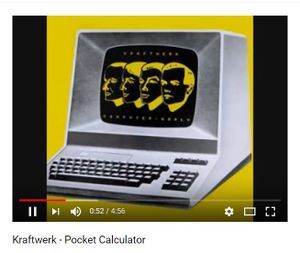
I'm the operator
With my pocket calculator
I'm the operator
With my pocket calculator
I am adding
And subtracting
I'm controlling
And composing
By pressing down a special key
It plays a little melody
By pressing down a special key
It plays a little melody
Since I am a Fashion Design student my aim was to create a 'real pocket calculator' by placing the calculator elements in a pocket. I chose jeans to play with because the strength of the fabric would allow putting some electronics in it. Unfortunately, the wire which had been attached to the battery didn't connect anymore so I was not able to put my design into reality. As a result, I made a photo-illustration.
I feel that there is a lot of opportunities to fill in the gap between technology and fashion although I am more interested in provoking! For me, this project is a visual gag to combine technology and fashion in a funny, odd and retrospective way. Also, this pocket calculator could be a manifestation of questioning the 'usage' and the meaning of touch. Who would use this gadget? As the wearer would have difficulties to use it - he/she would need a helping hand in order to be able to use it. On the other side, it would result that somebody would touch the wearer's bottom. Who would use whom? I feel that this design could provoke a lot of question and conflict...
Other Referencies
a small list of useless stuff
- http://raygun123.com/ (personal favourite) - https://wiredbugs.com/most-useless-inventions-ever/ - https://www.youtube.com/watch?v=GvUm3aaOpM8 - https://www.awesomeinventions.com/useless-inventions/
How to improve
- develop the connection between sewing and electronics - embroidered buttons - battery powered by movements - buttons made by hot steam note: the basic elements of the calculator (microchip, display, keyboard sensor)
cannot be replaced by something else
Project 4 - Mapping
The Brief History of Counting
Counting has always been important for mankind in order to follow the social and economic data flow. According to historians we have been counting for at least 50 000 years.
Counting does not include calculators all the time. It can be in the form of marks/signs (tally marks) or even finger counting – one of the most often used calculators is basically our hand! Finger counting has its own drawbacks since we only have ten fingers (1 finger=1 unit). However, by using finger binary it is possible to count until 1023!
As the complexity of life increased mankind needed specific but general symbols.
Presumably, this was the process of creating numbers:
1. distinguish different elements
2. mark them – to avoid visiting the same element again
3. defining a general code in order to prevent misunderstanding
(e.g when trading with other tribes)
As a result of the evolution of counting and numbers nowadays we use the Hindu-Arabic numeral system which is a positional notation based on 10.
The evolution of calculators - and computers:
inventions listed chronological order
- Hand-operated abacus, 2000BC, Egypt
- Napier bones, 1617, Europe by Napier
- Slide rule, 17th century, Europe by Edmund Gunther
- Mechanical calculator, 1642 by Blaise Pascal
- Calculating Machine, 1673, by Leibniz
- Jacquard Machine, 1820, Joseph-Marie Jacquard (Although it is a weaving machine it is considered to be an important step in programming).
- Colossus, 1943-1945, Turing
- EDVAC Computer, 1944, Neumann
- IAS Computer, 1951, Neumann -> computer era
My conclusion is that the development of numbers and counting is directly related to sciences, information technology and technological advancement. It is interesting to see the evolution of these gadgets - which are so ordinary and common-used today!
